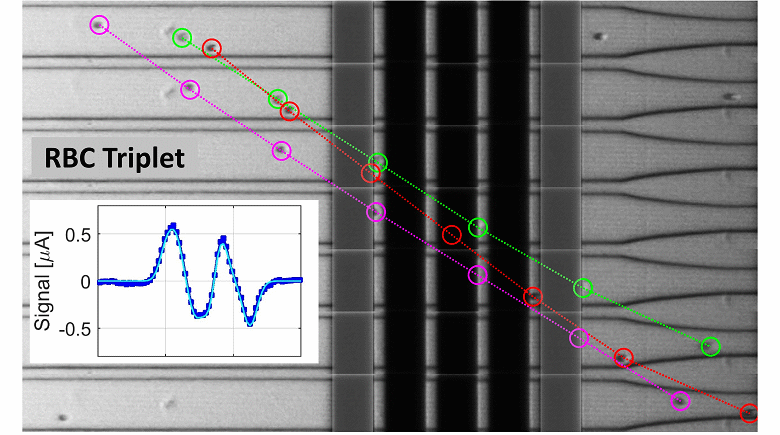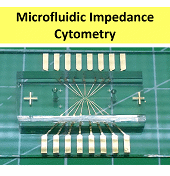
Cell counting and characterization is fundamental for medicine, science and technology. Coulter-type microfluidic devices are effective and automated systems for cell/particle analysis, based on the electrical sensing zone principle. However, their throughput and accuracy are limited by coincidences (i.e., two or more particles passing through the sensing zone nearly simultaneously), which give rise to a plethora of possible signal shapes from which single particle properties can hardly be extracted.
In this work, a strategy for coincidence resolution (i.e., identification of individual coinciding cells) in microfluidic impedance cytometry is proposed. The main idea is to acquire two electrical snapshots of each event (i.e., particle(s) passage), by using two successive sensing zones instead of one. By comparing the two snapshots, coincidence resolution is possible by exploiting a Bayesian approach based on maximum a posteriori probability (MAP) estimation. To this aim, a model of the signal generated by coinciding particles is introduced, along with a strategy to obtain a priori information on model parameters.
Quantitative performance assessment on synthetic data streams shows a counting sensitivity of 97% and a positive predictive value of 99% at concentrations of 2 million particles/ml. An application to red blood cell analysis shows accurate particle characterization up to a throughput of about 2500 particles/s. An original formula providing the expected number of coinciding particles is derived, and good agreement is found between experimental results and theoretical predictions.
The proposed system can be effectively used in applications where accurate counting and characterization of cell/particle suspensions over a broad range of concentrations is required.

